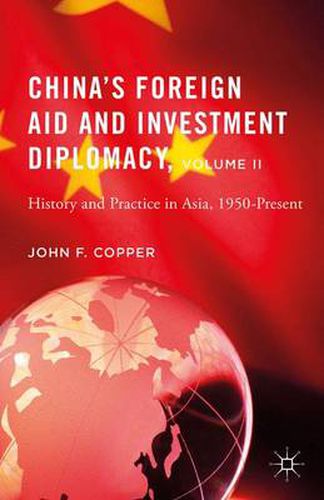Readings Newsletter
Become a Readings Member to make your shopping experience even easier.
Sign in or sign up for free!
You’re not far away from qualifying for FREE standard shipping within Australia
You’ve qualified for FREE standard shipping within Australia
The cart is loading…






This title is printed to order. This book may have been self-published. If so, we cannot guarantee the quality of the content. In the main most books will have gone through the editing process however some may not. We therefore suggest that you be aware of this before ordering this book. If in doubt check either the author or publisher’s details as we are unable to accept any returns unless they are faulty. Please contact us if you have any questions.
Today, by many accounts, China is the world’s foremost purveyor of foreign aid and foreign investment to developing countries. This is the product of China’s miracle economic growth over a period of more than three decades, together with China’s drive to become a major player in world affairs and accomplish this through economic rather than military means. This three-volume work is the first comprehensive study of China’s aid and investment strategy to trace how it has evolved since Beijing launched its foreign aid diplomacy at the time of the founding of the People’s Republic of China in 1949.
Volume II provides an analysis of China’s foreign aid and investment to countries and regional organizations on the Asian continent, covering all of its major sub-regions, during the period from 1950 to the present day. Copper considers motivating factors such as the Korean War, the Vietnam War, and China’s desire to challenge the West and later the Soviet Union. Also important to China and driving its aid and investment was China’s pursuit of Communist Bloc solidarity, a search for secure borders, and competition with India for influence in the Third World. Securing its imports of energy and raw materials and markets for is products came later. Marginalizing Taiwan and defeating it diplomatically constituted another goal of China’s foreign aid and foreign investment analyzed here.
$9.00 standard shipping within Australia
FREE standard shipping within Australia for orders over $100.00
Express & International shipping calculated at checkout
This title is printed to order. This book may have been self-published. If so, we cannot guarantee the quality of the content. In the main most books will have gone through the editing process however some may not. We therefore suggest that you be aware of this before ordering this book. If in doubt check either the author or publisher’s details as we are unable to accept any returns unless they are faulty. Please contact us if you have any questions.
Today, by many accounts, China is the world’s foremost purveyor of foreign aid and foreign investment to developing countries. This is the product of China’s miracle economic growth over a period of more than three decades, together with China’s drive to become a major player in world affairs and accomplish this through economic rather than military means. This three-volume work is the first comprehensive study of China’s aid and investment strategy to trace how it has evolved since Beijing launched its foreign aid diplomacy at the time of the founding of the People’s Republic of China in 1949.
Volume II provides an analysis of China’s foreign aid and investment to countries and regional organizations on the Asian continent, covering all of its major sub-regions, during the period from 1950 to the present day. Copper considers motivating factors such as the Korean War, the Vietnam War, and China’s desire to challenge the West and later the Soviet Union. Also important to China and driving its aid and investment was China’s pursuit of Communist Bloc solidarity, a search for secure borders, and competition with India for influence in the Third World. Securing its imports of energy and raw materials and markets for is products came later. Marginalizing Taiwan and defeating it diplomatically constituted another goal of China’s foreign aid and foreign investment analyzed here.